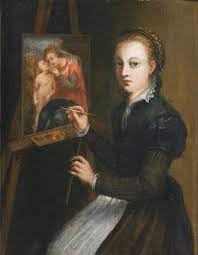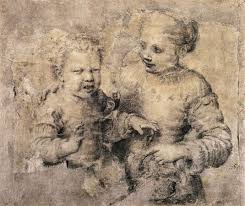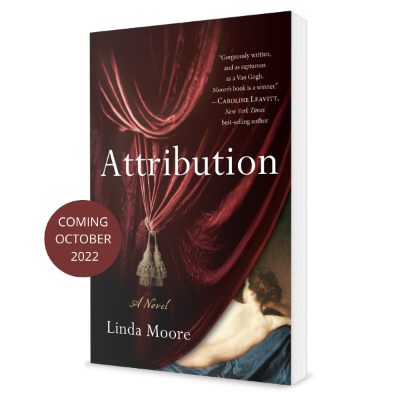| Forgotten and Discovered- Women Super Stars: Sofonisba Anguissola Sofonisba Anguissola (Cremona, Italy 1532-1625)  Let’s call her Sofi and get to know her. In the sixteenth century, her talent caught the attention of Michelangelo and King Phillip II of Spain. Sofi’s father, a noble without great wealth, paid for Sofi to be tutored in painting, unusual for a young girl in these times, but her talent was quickly recognized.  Michelangelo learned of her work and asked if Sofi could sketch a crying child, much more difficult than portraits of smiling children. She drew her brother as a Boy Bitten by a Crayfish (1554), a sketch of a crying child, his mother trying to comfort him, not saints, not a noble family, and not mythological figures, but a completely human scene. Michelangelo was so impressed he agreed to tutor her. She was 22. Forty years later the drawing of the crying boy would inspire Caravaggio to paint an expressive masterwork called Boy Bitten by a Lizard (1594).  Vasari the famous 16th c. art critic wrote of Sofi’s A Portrait of the Artist’s Sisters Playing Chess, “they appear alive.” In a move away from the divine to naturalism, Sofi developed a style that not only reflected her reality but showed women engaged in a strategic game with sisterly competitiveness. In the 1500s works of women painted as real people, not objects, painted by a woman were unheard of.  At age 27, Sofi was invited to be a painter in the Spanish court of Phillip II, as a lady-in-waiting to Queen Elizabeth of Valois, with whom she developed a friendship as her painting tutor. When the Queen died, Sofi was so respected as a court painter and so loved by King Phillip II and his family, that she, a single woman unusual in her time, was invited to stay on. She stayed for years and became one of Europe’s most admired court painters.In 1624, the year before she died, Flemish painter Anthony van Dyck visited her in Italy and painted a portrait of the remarkable elderly woman. Van Dyck wrote that “her eyesight was weakened,” but was she still quite sharp-witted. He said she taught him the insights of portrait painting.After the 18th c. Sofi disappeared and was nearly forgotten until recent years in part because of Linda Nochlin, the inventor of feminist art history. Nochlin asked the question in an important essay (1971): “Why have there been no great women artists?” The answer of course, is that there have been; we just don’t know about them from art scholars like H.W. Janson who omitted women from their scholarly publications.Many of Sofi’s paintings remained in the royal collection in Madrid and were ascribed to Sanchez Coello who was the head royal painter when Sofi was there. The Prado in Madrid recently reattributed works including this portrait of King Phillip II and celebrated Sofi’s accomplishments with an exhibition in 2020 alongside Lavinia Fontana (1552-1614) another woman who almost disappeared from the art chronicles. Here’s a link to the exhibiton: https://www.museodelprado.es/e…As the world learns more of her extraordinary talent, we will uncover more works by her and learn of other “great women artists.”  Preorder Today |